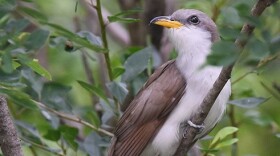If you have ever had the fortune to witness an Apache Crown dance or watched the 1986 movie Crocodile Dundee, you may have heard an indescribable sound made by a curious device known as the bullroarer. The bullroarer has been used by cultures worldwide as a ritual musical instrument, and for communicating over great distances. A piece of wood is attached to a string and rotated rapidly in a circular motion to produce a vibrational roaring sound.
Bullroarers are one of the earliest artifacts that can be classified as a musical instrument, dating back almost 20,000 years. Australian Aboriginal people use the bullroarer during initiation ceremonies and other rituals, including burials. Bullroarers have also been documented in Europe, Asia, Africa, and the Americas, where they’re still in use today.
The Apache Crown Dance can be performed as a social dance, in healing ceremonies, or in the Sunrise coming of age ceremony. According to Apache belief systems, the dance was taught to them by the mountain spirits as a means of healing. Thus as they dance, the Crown Dancers are believed to embody the mountain spirits. There are typically 5 dancers ornamented in white pigment and elaborate symbolic crowns. Four masked dancers represent the cardinal directions. The fifth dancer is the clown, who protects the others by driving away evil spirits using the bullroarer.
So next time you hear the buzz of the bullroarer, remember that its the same sound one of your ancestors may have heard regardless of their continent of origin.
This Earth Note was written by Carrie Calisay Cannon and produced by KNAU and the Sustainable Communities Program at Northern Arizona University.








